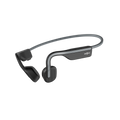You don’t have to be marathon training to want to increase your distance. More time spent running, when done correctly, can lead to faster paces, prolonged stamina, and improved mental toughness. It can be easy to get caught up in the thrill of seeing your kilometres go up, but to stay healthy and avoid burnout, you need to add kilometres wisely and consider your recovery.
Follow the 10 Percent Rule
You may have heard this before: Don’t increase your weekly total distance by more than 10 percent over the previous week. Why’s that? Too much too soon can cause overuse injuries, including the dreaded ITBS or shin splints.
For beginner runners—say you’re logging 16 or fewer kilometres per week—don’t worry too much about increasing distance every week, and ignore the 10 percent rule until you have a solid base of weekly kilometres. Get comfortable on your feet and maintain short, easy runs several days a week for several weeks—about 16km a week for about four weeks to allow your body to adjust.
Find the Right Gear
As you log more distance, your gear (especially your shoes!) will break down more quickly. A good pair of running shoes will last, at most, 800km, before they will need to be replaced. That number can vary based on the shoe material, your weight, and your foot strike pattern.
When shoes break down, they don’t provide your body with the support it needs, which could lead to injury.
But it’s not just shoes that need to be replaced due to wear and tear. Sports bras don’t last forever, as most women can attest to! And while personal hygiene is great, if you wash them after every use they tend to wear out more quickly. Once the shoulder straps start to slip or the chest strap feels loose, it’s time to get a new bra.
For many runners, sports bras will last up to 12 months.
The same goes for running socks: they can take quite a beating over the kilometres. Once that cushion starts to thin or the elastic stretches, it’s time to toss your trusty sole mates.
Focus on Recovery
Increasing distance slowly and keeping your gear up-to-date is just part of the equation. You may have been able to sidestep injury by running just a handful of kilometres a week, especially if they were at an easy, conversational pace. But as you ramp up, your body takes a toll.
If you aren’t already, introduce regular stretching and foam rolling to your weekly training regimen. It doesn’t take much to see the results; just a few minutes of foam rolling and stretching per day can help your muscles recover.
You’ll also want to make sure you get enough sleep as you add miles. Sleep is the time your body starts to heal and rebuild broken-down muscle tissue.
It’s important to eat well, too. As you add more kilometres, your daily caloric will increase, as well as your protein and carbohydrate requirements.
The exact number will vary runner to runner, due to body type, and weekly kilometres and intensity. But runners should aim for about 2.5 to 4.5 grams per pound of body weight, or 55 to 65 percent of their total diet from carbohydrates.
Athletes tend to need more protein than sedentary folks, too. Aim for 0.6 to 0.8 grams of protein per pound of body weight.
And don’t forget about fat! Healthy fats, found in olive oil, nuts, avocados, and fish, for example, can help the body fight inflammation and help runners meet their caloric needs.
Let us know how you’re adding more distance Tell us on Facebook, Instagram, or Twitter.












